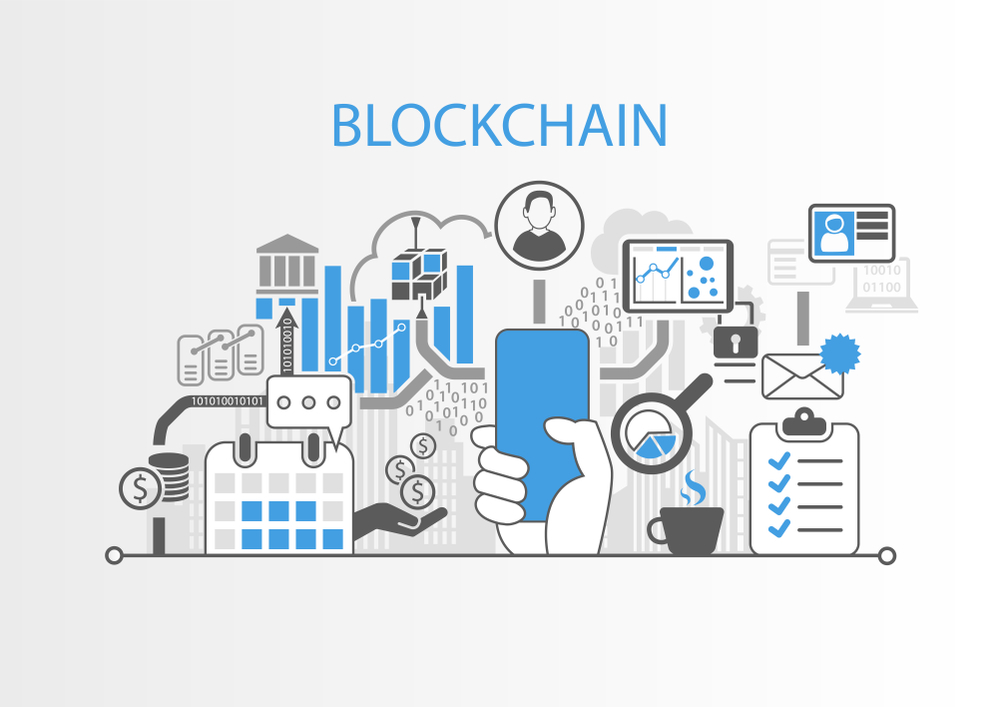
Imagine a world of Blockchain Crypto Currency where sending someone money without a bank is possible- and that too, in seconds without paying a humungous fee with Blockchain Crypto Currency. Or where your money is not stored in a bank, but in your online wallet, with complete control over it. You don’t need anyone’s permission to access or move it, not the government.
But wait a minute, that’s not the future you’re imagining. It is a world where a small but growing number of people live. And this is just one of the numerous uses of Blockchain technology. It is a topic that intimidates people because of its mysteriousness. Some even remain sceptical that they will use it in the future, which is understandable considering it’s in early development and still being adopted. As Blockchain technology continues to grow, it is important to know what it means, how it works, and how it is gaining so much popularity and importance in the digital world.
What Is Blockchain?

Satoshi Nakamoto, whose real identity remains unknown, was the first to introduce the concept of Blockchain in 2008. The design has since then continued to improve and evolve. It eventually became a fundamental component of bitcoin, a well-known form of cryptocurrency, where it serves as a public ledger for all network transactions. Bitcoin blockchain file sizes, which comprised all transactions and records on the network, continued to grow significantly. By August 2014, it had reached 20 gigabytes and eventually surpassed 200 gigabytes by early 2020.
When put, Blockchain is a system of recording information so that it is impossible to alter, hack or cheat the system. The digital world defines Blockchain as an immutable (unchangeable) distributed digital ledger (digital record of transactions and data stored in various places on a computer network). The two fundamental properties of the Blockchain are its immutability and distributed nature. They make Blockchain trustworthy and safe from hackers and network attacks. Blockchain stores information on ‘blocks’ in multiple databases called ‘chain’ in a network connected through peer-to-peer nodes. This is the digital ledger. Every transaction in the ledger requires authorization by the owner’s digital signature. This authenticates and safeguards the entire transactional process. A record of every transaction is also stored in every owner’s ledger.
How Do Blockchain Transactions Work?

One of Blockchain technology’s prime features is the way transactions are authorized. There are several steps involved in the process. Put,
- A transaction is initiated by an authorized participant who needs the technology’s authentication beforehand.
- This action creates a ‘block’ representing the data related to the transaction.
- This block is sent to all the computer nodes in the network.
- The authorized nodes verify the transaction, and the lock is added to the existing Blockchain.
- This new update is distributed across the network, making the transaction final.
Businesses around the world are integrating Blockchain technology into their systems. The question arises if it is that easy. Does it require a complete transition or just minor alterations? For that, it is important to understand how this technology works. Blockchain is a combination of three major technologies.
- Cryptographic keys
- A peer-to-peer network containing a shared ledger
- A means of computing to store the transactions and records of the network
A cryptography key comprises two keys – A private key and a Public key. These keys aid in performing successful transactions between two entities. Each participant has access to these two keys, which produce a secure digital identity reference. This identity is a vital aspect of Blockchain technology. It is referred to as a ‘digital signature’ in the cryptocurrency world and is used for authorization and control of transactions. Blockchain users employ these cryptography keys to carry out digital transactions and interactions over the peer-to-peer network.
Types of Blockchain networks
There are multiple ways in which Blockchain networks can be built. Public, Private, permissioned or built by the consortium
Public Blockchain networks
A public Blockchain network can be joined and participated in by anyone. Blockchain networks are open and decentralized networks that can be accessed by anyone requesting a transaction. Bitcoin and cryptocurrencies are two important examples of public blockchain technologies. An advantage of a public Blockchain is that it helps eliminate security challenges and flaws with centralized networks. Though for enterprises, some level of privacy and security-related issues arise.
Private Blockchain networks
Private Blockchain networks have limited access and restrictions. They follow an authorization process and permissions from the system administrator. A single entity governs them, which means they are centralized. An example is Hyperledger. Private Blockchain networks are usually used by private business organizations that require customized limited accessibility.
Permissioned Blockchain networks
Permissioned or hybrid Blockchain networks are private Blockchains that allow special access to authorized individuals. Usually, businesses that set up private Blockchain networks also set up permissioned Blockchain networks to control who is allowed to participate in certain transactions. An invitation or permission needs to be acquired by the participants wishing to make transactions.
Consortium Blockchain networks
Consortium Blockchains are a combination of public and private Blockchain networks. It contains components from both and is managed by multiple organizations. They are usually more complex to set up, but once up and running, and they guarantee more security. They are best for collaborations between organizations. For example, Energy Web Foundation, Dragonchain, and R3.

Blockchain is not just a database; it is a brand new technology stack with ‘digital trust’ bringing revolution in how information and value are exchanged across the internet. The entire field is vast and has an immense amount of information one can learn. We have covered just a small percentage of it in this article and plan on increasing your knowledge of Blockchain even more in the future.
Dexterous Solutions is a global branding and marketing agency based in the US, serving companies of all sizes. We specialize in understanding your brand and vision and work closely with you to craft branding and marketing assets that align with your brand strategy, mission, vision and goals. With satisfied clients worldwide, let’s connect and explore how we can help you achieve your business goals.



